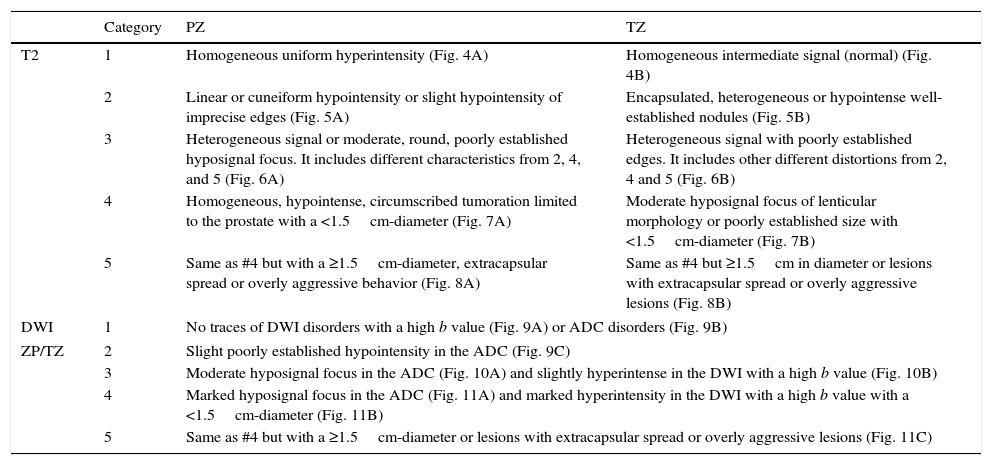Version 2 of the Prostate Imaging and Reporting and Data System (PI-RADS) was developed to help in the detection, location, and characterization of prostate cancer with magnetic resonance imaging (MRI). Its recommendations for standardizing image acquisition parameters aims to reduce variability in the interpretation of MRI studies of the prostate; this approach, together with structured reporting, has the added value of improving communication among radiologists and between radiologists and urologists.
This article aims to explain the PI-RADS v2 classification in a simple way, using illustrative images for each of the categories, as well as to recommend the use of a standard technique that helps ensure the reproducibility of multiparametric MRI.
ConclusionThe PI-RADS v2 is simple to apply when reading multiparametric MRI studies of the prostate. It is important for radiologists doing prostate imaging to use the PI-RADS v2 in daily practice to write clear and concise reports that improve communication between radiologists and urologists.
El sistema de datos e informe en imagen prostática (Prostate Imaging and Reporting and Data System, PI-RADS) en su versión 2 fue creado con el fin de ayudar en la detección, localización y caracterización del cáncer de próstata con resonancia magnética (RM). Sus recomendaciones de estandarización de parámetros de adquisición de imágenes pretenden disminuir la variabilidad en la interpretación de los estudios de RM prostática, lo que, junto con la realización de un informe estructurado, tiene el valor añadido de mejorar la comunicación entre los radiólogos, y entre estos y los urólogos.
El objetivo de nuestro trabajo es explicar de manera sencilla el sistema de clasificación PI-RADS v2 mediante imágenes ilustrativas de cada una de las categorías, así como recomendar el uso de una técnica estándar que ayude en la reproducibilidad de los estudios de RM multiparamétrica.
ConclusiónEl documento PI-RADS v2 es sencillo de aplicar a la lectura de la RMmp de próstata. Es importante que los radiólogos dedicados a la imagen prostática lo incluyamos en la práctica diaria para realizar informes claros y concisos que mejoren la comunicación entre radiólogos y urólogos.























